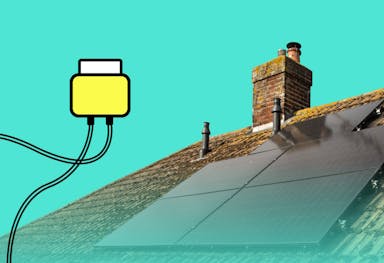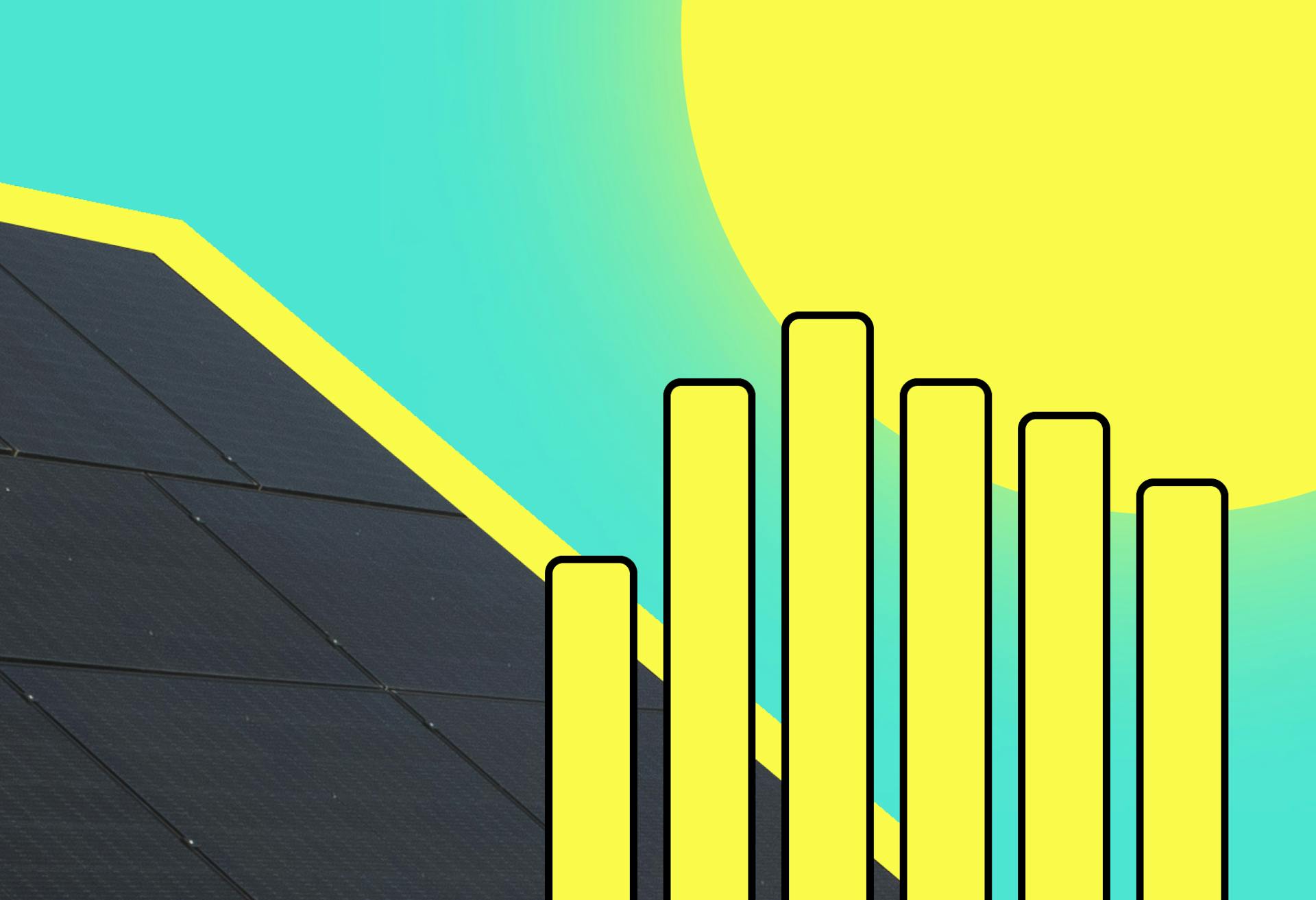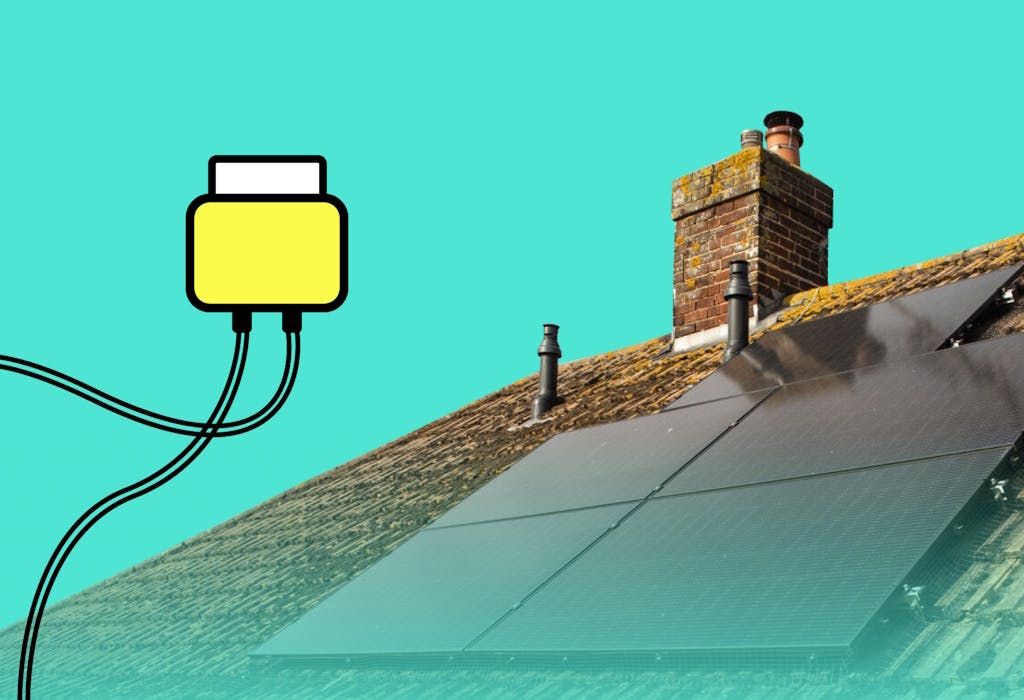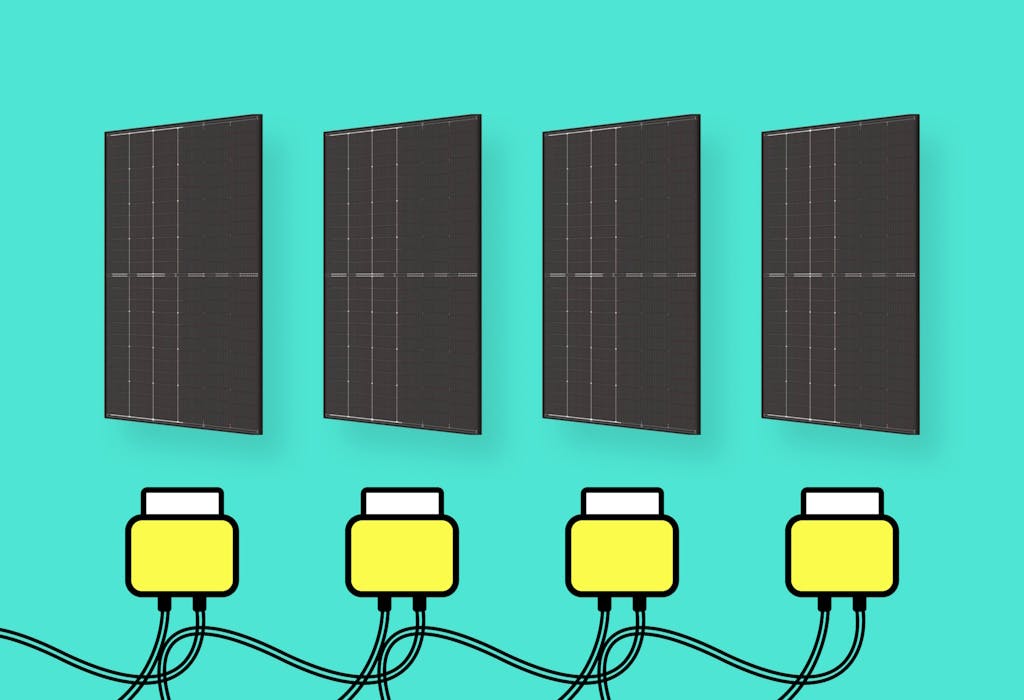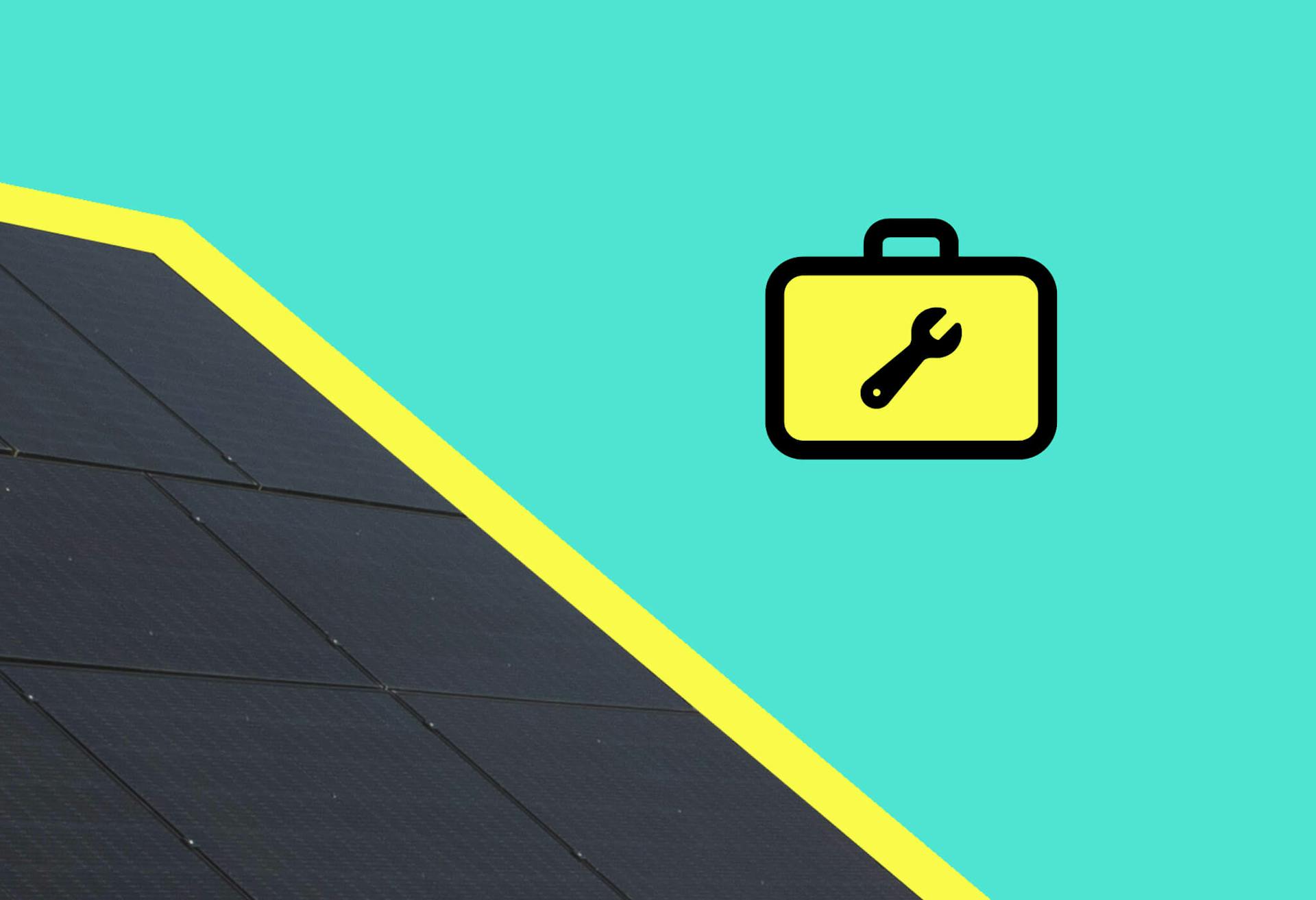- Solar advice hub
- Installation
- Solar panel shading: is it a problem?
Solar panel shading: is it a problem?
Discover the typical impact of shade on solar panel output in the UK, and the five smart ways to mitigate it.


Why you can trust our content
We know that the solar industry is full of misinformation, but we only use reliable sources, including:
- Our experienced solar experts, installers and system designers
- Our own database of solar & battery system designs
- Authoritative bodies like MCS and the UK government



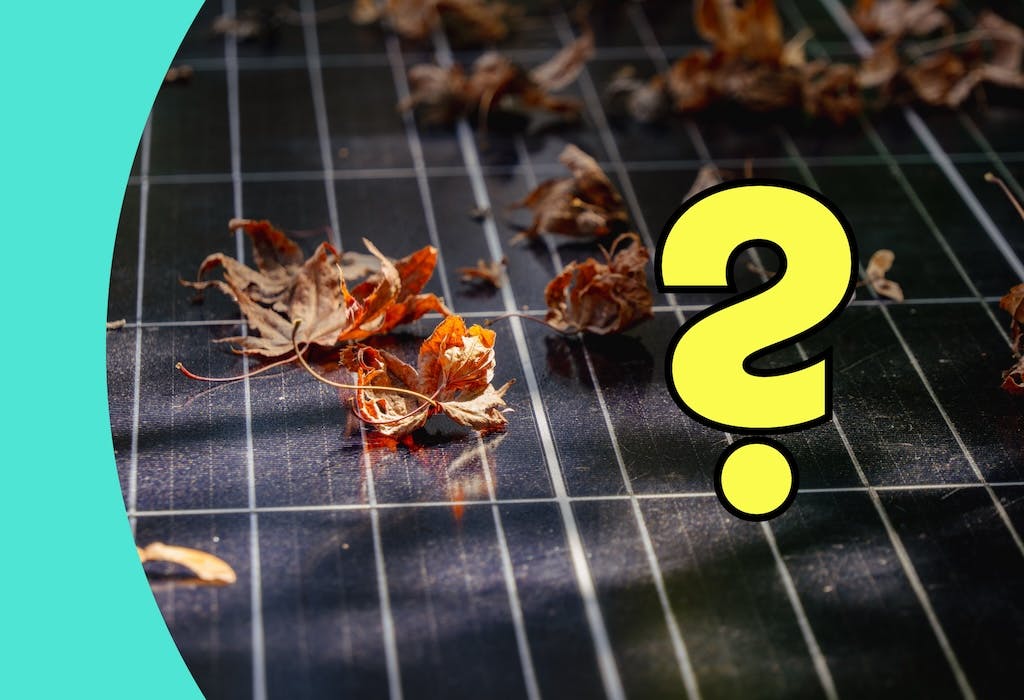
Calculate savings
What kind of home do you live in?
Calculate savings
What kind of home do you live in?
Solar panel shading: at a glance
As a technology that relies so famously on sunlight, solar panels naturally don’t do too well in the shade. In fact, even very partial shading can noticeably reduce a system’s output, which means smaller savings on your energy bills.
In this article, we’ll explore why shading has such a disproportionate effect on a solar panel’s electricity generation, and all the smart ways to mitigate it.
Wondering how much you could save with a solar & battery system? Just answer a few questions below, and we’ll provide an estimate.
Is shading an issue for solar panels?
Solar panels don’t need direct sunlight to generate electricity - just daylight. This means they can still produce lots of power on cloudy days, which is why they’re so effective at cutting electricity bills in the UK.
However, shading poses a more significant challenge. When part of a solar panel isn’t receiving any light, this might sound like a minor issue, but the knock-on effect can be surprisingly significant.
This is because a solar panel is made up of photovoltaic (PV) cells, which are connected ‘in series’. The current flows through each cell sequentially, and if one cell is producing only a very small amount of power, it will drag the rest down to its level.
And if all the solar panels in a system are also connected ‘in series’ - which is very common - this problem then occurs on an even larger scale; the panel with lower output will reduce the output of the whole system.
When a system is installed ‘in series’, think of each solar panel as a link in a chain. One weak link, and the whole chain is compromised.
How much does shading affect solar panel output?
The typical reduction in solar panel output caused by shading depends on a few factors, namely how intense the shade is, how the panel has been installed, and the type of solar panel in question.
Light shading from fallen leaves or dirt may reduce output moderately, while solid shading from a nearby building can reduce it more considerably.
In 2021, a research team from Sastra Deemed University in India found that dirt on a panel could reduce output by 40%, while partial shading from a nearby obstruction could cause an 80% drop in performance.
Fortunately, modern monocrystalline solar panels are designed to deal fairly well with partial shading, as they're fitted with something called bypass diodes (more on this later).

What are the risks associated with solar panel shading?
The crucial problem that comes from solar panel shading is the risk of 'hotspots'.
Hotspots are small, overheated areas that can form in shaded solar cells when the cell starts consuming power instead of generating it. This happens because the current flowing through the shaded cell forces its voltage to become negative, causing it to act as a resistor.
The energy used by the cell then gets released as heat, which raises its temperature - often well above boiling point. This extreme heat can lead to glass breakage, discolouration, and, in severe cases, even fires.
A 2024 study highlighted how partial shading can be more harmful than full shading, as it creates an uneven flow of current across the cells and intensifies the risk of hotspots. The study found that shading ratios of 40-60% can increase the temperature of the shaded area from 25°C to as high as 105°C.
Unsurprisingly, hotspots will reduce a solar panel's lifespan and cause it to lose over 15% of its output over its (shortened) lifetime.
However, the development of bypass diode technology in solar panels has significantly decreased the risk of hotspots.
The importance of bypass diodes
Bypass diodes are small electrical components that allow electrical currents to literally skip past shaded sections of a solar panel. Most modern solar panels include them as standard to help reduce the detrimental impact of shading.
If one part of a solar panel is experiencing reduced output due to shade, the corresponding bypass diode will kick in and redirect the current around it, ensuring the rest of the panel continues to function efficiently.
While this means the shaded section temporarily stops producing any electricity, it’s a necessary tradeoff; bypass diodes prevent the rest of the panel from losing output, and they also protect against hotspots.
However, all a bypass diode is doing is temporarily shutting down a few solar cells, meaning there’s still a drop in output. It’s just safer, and isn’t affecting the performance of the other cells.
Ideally, every solar cell would have its own bypass diode for maximum efficiency, but this would end up making panels too expensive.
Instead, manufacturers usually include three bypass diodes per panel, each one tasked with managing one third of the panel’s cells. This strikes a practical balance.
How to reduce the impact of solar panel shading
Anything that blocks daylight from reaching your solar panels will negatively affect their output.
That can include overhanging foliage, tree branches, nearby buildings, as well as layers of dust, debris, and droppings on the panel surface.
However, there are ways to avoid shading in the first place, and ways to mitigate the impact of unavoidable shading.
Here are the five best approaches.
1. Smart system design
To avoid shading issues, it's best to have your solar PV system professionally designed and installed, rather than attempting to do it yourself.
Professional installers will use advanced software to carefully assess your property and place panels in optimal locations, avoiding sources of permanent shading like nearby buildings or trees.
And in the case of unavoidable shade, they can isolate specific groups of panels by putting them on a separate inverter string (where possible), which reduces the negative impact on the rest of the system.
To find out how much you could save on energy bills with a professionally designed and installed solar & battery system, just answer a few quick questions below and we'll provide an estimate.
2. Optimisers
Solar panel optimisers are small devices that attach to individual solar panels and help reduce the impact of shading.
They work by rerouting the electric current around panels that are underperforming, ensuring that your overall output isn’t dragged down.
They also provide real-time monitoring, so you can track the performance of each panel and identify issues quickly.
However, optimisers tend to require a fair bit of maintenance, usually making them a worse choice than microinverters (see next section).
Learn more, check out our detailed guide to solar panel optimisers.
3. Microinverters
If your solar panel system is guaranteed to be dealing with partial, unavoidable shading throughout its lifetime, microinverters are a very effective solution.
Like optimisers, they’re small devices that attach to each individual solar panel and help to prevent a shaded panel affecting system-wide output. However, unlike optimisers, which work alongside a standard string inverter, microinverters collectively replace the string inverter.
Instead, the conversion from direct current (DC) electricity to alternating current (AC) electricity happens locally at each panel.
Microinverters tend to cost a fair bit more than optimisers, but they’re much less temperamental, last longer, and offer more advanced panel-by-panel monitoring capabilities.
However, it’s always best to rely on intelligent system design before resorting to additional technology, as this adds to the total cost of your solar panel system, and often isn’t worth the extra expense.
A trustworthy, experienced installer will weigh up the added cost against the additional output, and advise you on what’s best.
To learn more, check out our detailed guide to microinverters.
4. Bird protection
A bird infestation beneath your solar panels is a surefire way to experience reduced system output.
Unfortunately, birds love to nest beneath the warmth of a rooftop solar panel array, which significantly improves their domestic setup and radically worsens yours.
While bird poo itself technically doesn't cause shading, it blocks daylight from reaching the solar cells which has the same negative effect. Left unaddressed, this could eventually cause hotspots, panel corrosion, and permanent damage.
The best way to avoid this is by installing bird protection. This involves adding physical barriers, like mesh or spikes, around the edges of your panels to stop birds from nesting underneath.
Quality mesh/spikes installed by a professional should last as long as your system, meaning you won’t need to worry about birds launching an invasion.
If you’re not sure whether it’s worth the additional cost, be aware that it’s much more expensive to add bird protection at a later date, as you’ll have to pay for scaffolding all over again.
5. Cleaning
Like bird poo, dust and dirt on solar panels technically aren't causes of shade, but they do block daylight from reaching the PV cells in the same way.
The impact is usually less dramatic than shading from objects like trees or buildings, but a layer of dirt or debris can still act as a barrier.
Conveniently, solar panels are designed to be self-cleaning. They’re manufactured with a waterproof coating and installed at an angle, so rainwater just rolls right off them and takes most of the dirt with it.
Naturally, in the rainy UK weather, solar panels stay pretty clean. However, it’s still wise to give your solar panels a wash every two or three years, or a little more frequently if you live right on the coast or next to dusty farmland.
To learn more, check out our guide to solar panel cleaning.
Next steps
Although shading can greatly reduce solar panel output, choosing a professional installer will help to minimize its impact, namely through expert system design.
And if shading is unavoidable, you can always turn to additional technologies such as optimisers or microinverters, although sometimes the gain in output is not worth the additional cost. An experienced installer will be able to advise you on this.
If you're interested in finding out how much you could save with a solar & battery system, simply answer a few quick questions below and we’ll provide an estimate.
Solar panel shading: FAQs
Related articles

Written byMelody Abeni
Based in London, Melody is a specialist green technology writer who has been covering sustainability, climate action and ESG for the past five years, after gathering operational experience in green investing and financial services. She has written for various industry publications, including renewable technology advisor The Eco Experts, and she holds a Master’s degree in law from Birkbeck University.

